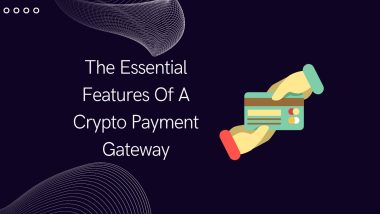Avoid These 6 Bitcoin Scams
We are committed to protecting our users, so we see it as our duty to regularly update our users on security best practices. This article lists six frauds you should be aware of when using P2P networks to exchange Bitcoin and other cryptocurrencies.
Dating Scams
A romantic scam, the first of the three men-in-the-middle (MITM) scam scenarios we’ll discuss, preys on your feelings to conceal the genuine, evil intention of the con artist. At first sight, it can seem like a trick that we won’t fall for, but this tactic is more common than you might imagine. According to the Federal Trade Commission, romance scams were the second-most reported crime to the FBI in 2019 with over 25,000 victims reporting losses totaling $201 million.
In this case, a fraudster uses dating applications like Tinder to target victims and then establishes online relationships with them to gain their trust. At some point, the con artist will convince the victim to send him some Bitcoin or another kind of cryptocurrency to assist him with his financial problems. The victim is unaware that the fraudster has given the contact information of a random crypto seller, who will mistakenly send money from the victim to the scammer under the pretense that it is a standard crypto-to-cash transaction.
Investing fraud
In contrast to romance scams, which center on feelings towards a fictitious “lover,” the motivation behind this MITM scam is the investor’s desire to make a quick profit from their investment. Investment fraud is unfortunately on the rise due to early this year’s spike in cryptocurrency prices. The FTC received around 7,000 allegations of this kind of scam between October 2020 and March 2021, which is 12 times more than the previous year and resulted in losses of $80 million.
In this case, a con artist identifies victims searching for Bitcoin investments that will provide quick profits and seduces them with promises of “guaranteed” profits if they act quickly. It may entail phony websites and apps that purport to display a person’s earnings. At some time, the con artist will demand payment from the victim in exchange for the Bitcoin he has acquired.
Online frauds
This MITM method has been modified to encompass e-commerce transactions on shady websites. Scammers might take advantage of the fact that Bitcoin is still gaining traction as a worldwide payment mechanism by offering unwary consumers discounted goods.
Fraudulent Fake Receipts
When conducting P2P transactions online, it’s crucial to carefully review the data that your counterparty sends to you. Scammers will occasionally alter screenshots and other images to suggest that they have fulfilled their end of the bargain and to put pressure on you to fulfill yours as well. You will lose money for nothing and find it difficult to fix it if you give in to a con artist’s pressure without first making sure you received the money they delivered.
Chargeback phishing
On some payment platforms, there are chargeback capabilities that can be used by scammers to defraud their P2P counterparties. In other words, this con artist will start a chargeback after a P2P transaction is finished and use the money to undo or cancel the initial payment he made. This occurs particularly if the seller approves the transaction in a hurry without thoroughly verifying that the funds are already present in his bank account or wallet.
Mistaken Transfer Scams
A scammer may occasionally attempt to cancel a P2P transaction after it has been completed. To do this, he can call his bank and request that the transaction be canceled, arguing that the fund transfer is incorrect or that his account has been compromised. A seller who loses money in this fashion is then intimidated into not reporting the cancellation to the authorities by the con artist by claiming that bitcoin is “illegal” or by making some other false statement.
FAQS:
Why did P2P fail?
Even in the event of a default, it is challenging for lenders to get in touch with borrowers directly due to consumer protection rules. P2P networks do not allow lenders to communicate with borrowers directly through the system because of regulatory restrictions and privacy laws.


